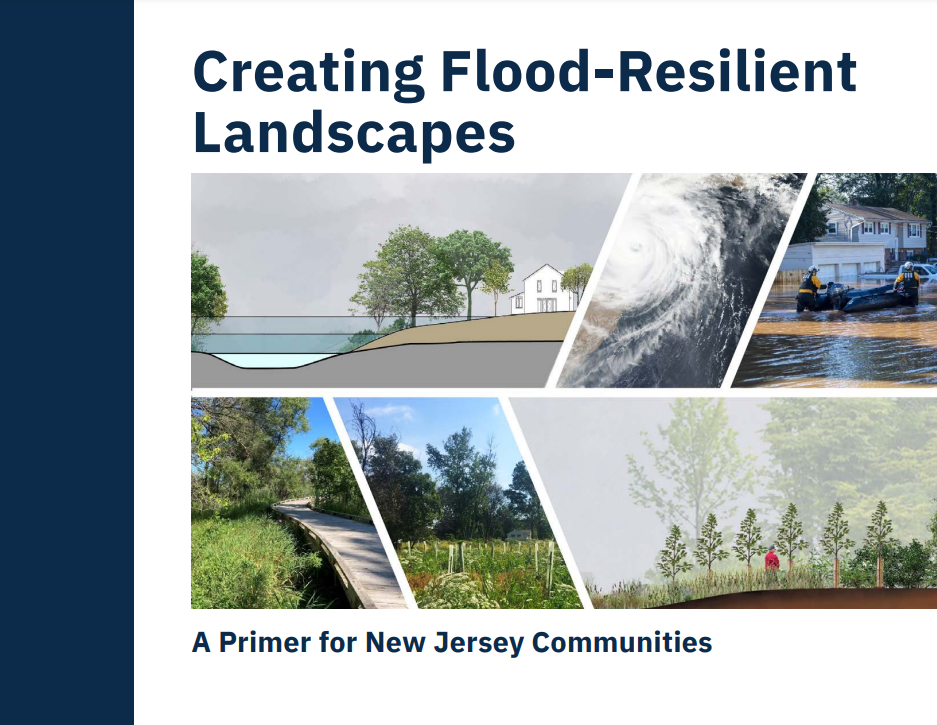
Creating Flood-Resilient Landscapes: A Primer for New Jersey Communities (2023)
Last modified on June 24th, 2025 at 2:16 pm
“Creating Flood-Resilient Landscapes: A Primer for New Jersey Communities” is a comprehensive guide designed to help stakeholders plan, design, and implement flood resilience projects on Blue Acres parcels and other flood-prone open spaces. This project is a collaboration between the Rutgers New Jersey Agricultural Experiment Station and South Dakota State University School of Design, funded by the New Jersey Department of Environmental Protection and the Rutgers Climate and Energy Institute.
Purpose of the Primer
The primer aims to provide stakeholders with the knowledge and tools needed to create flood-resilient landscapes. It addresses the significant risks posed by floods to human health and infrastructure and offers strategies to mitigate these risks through effective landscape management.
Key Sections of the Primer
- Overview of Flooding and Its Impact in New Jersey:
- Highlights the widespread impact of flooding across New Jersey’s municipalities.
- Discusses the increasing frequency and severity of flood events due to climate change and the state’s dense population and development.
- Framework for Developing a Landscape Resilience Strategy:
- Outlines a structured approach to creating flood-resilient landscapes.
- Emphasizes the importance of addressing challenges such as soil health, hydrologic patterns, and environmental stressors.
- Natural Function of Flood-Prone Landscapes:
- Explains how natural ecosystems function to mitigate flood risks.
- Illustrates the impact of development on flood vulnerability and the role of biodiversity in maintaining ecological function.
- Designing, Implementing, and Maintaining Resilient Landscapes:
- Provides specific methods and techniques for transforming acquired properties into public assets.
- Combines principles of engineering, ecology, landscape architecture, and social science to create sustainable, ecologically based resilience initiatives.
Challenges and Solutions
The primer addresses several challenges associated with managing flood-prone properties, including:
- The need for sustainable management practices that do not overburden public resources.
- The importance of maintaining ecological function despite legacy effects of previous development.
- The necessity of community buy-in and effective partnerships to ensure successful project implementation.